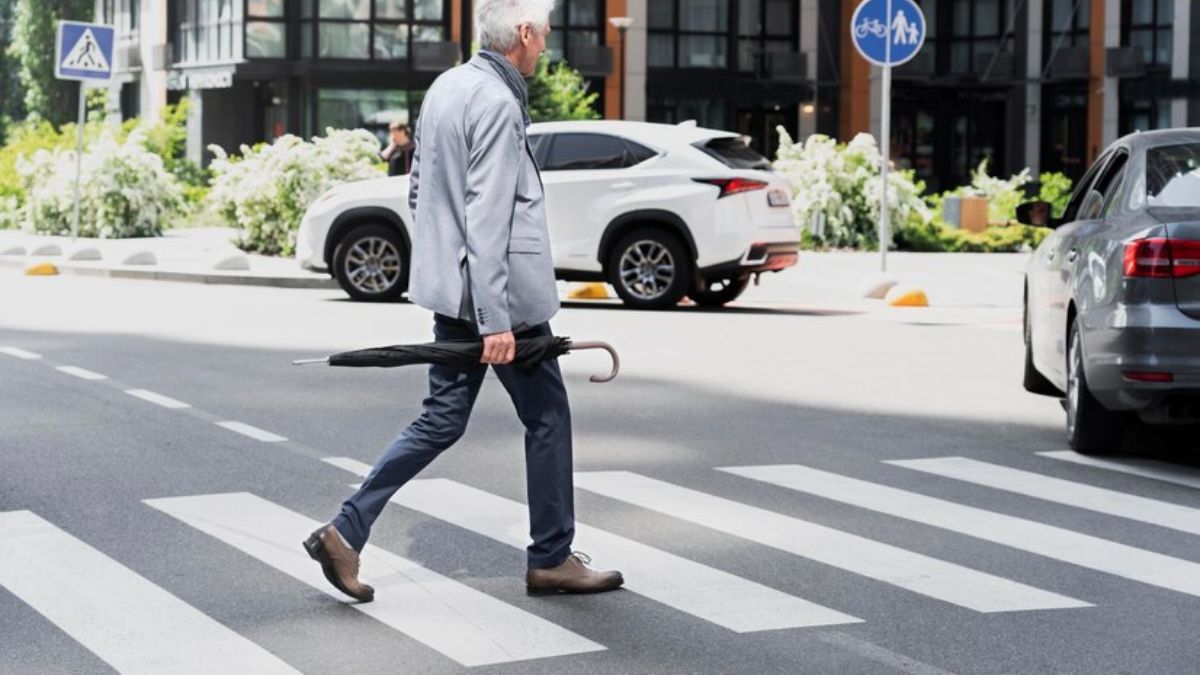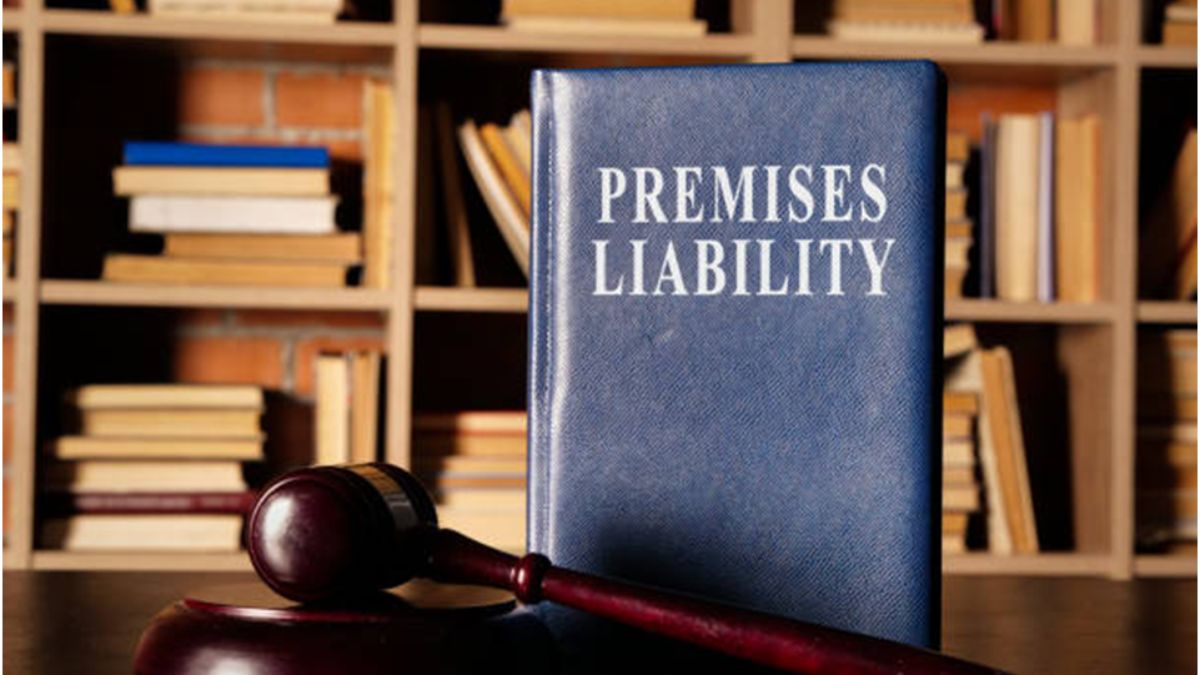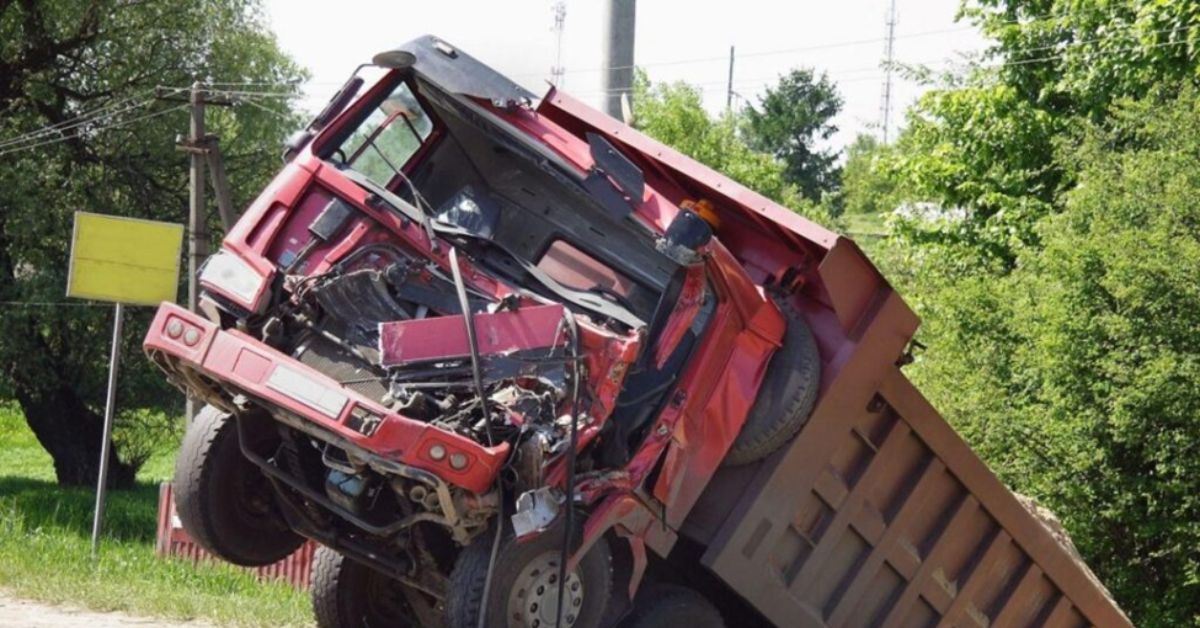LAW
Common Causes of Pedestrian Accidents

Pedestrian accidents are a significant public safety issue. Each year, thousands of pedestrians are injured or killed due to collisions with vehicles. Understanding the common causes of pedestrian accidents can help prevent these tragic incidents and protect both pedestrians and drivers. This article will explore the leading causes of pedestrian accidents, the legal responsibilities involved, and how pedestrians and drivers can reduce the risk of collisions.
1. Distracted Driving
Distracted driving is one of the most common causes of pedestrian accidents. Drivers who are texting, talking on the phone, or even adjusting their car’s settings are not fully focused on the road. Even a momentary lapse in attention can lead to catastrophic consequences, especially in areas where pedestrians are present, such as crosswalks, school zones, and urban intersections.
Legal Liability: In most jurisdictions, distracted driving is illegal. Drivers found to be at fault for a pedestrian accident due to distraction can face fines, license suspension, and be held liable for damages in civil lawsuits.
2. Speeding
Speeding reduces a driver’s reaction time and increases the severity of accidents. In pedestrian-heavy areas, speeding is particularly dangerous because drivers may not have enough time to stop if a pedestrian suddenly crosses the street. Areas like school zones and urban environments often have lower speed limits to protect pedestrians, yet speeding remains a common problem.
Legal Implications: Drivers caught speeding in pedestrian zones can face steep penalties, including higher fines and potential criminal charges if the speeding leads to a fatality.
3. Failure to Yield the Right of Way
Pedestrians have the right of way at marked crosswalks and intersections, but many drivers fail to yield, resulting in serious accidents. Drivers are legally required to stop for pedestrians in these areas, but impatience, distraction, or misjudgment often leads to collisions.
Legal Consequences: Failure to yield is a violation of traffic laws. Drivers who fail to give pedestrians the right of way may be cited for traffic violations and held liable for any resulting injuries.
4. Driving Under the Influence (DUI)
Alcohol and drugs severely impair a driver’s ability to react and make sound judgments, leading to a higher risk of accidents. Pedestrians are especially vulnerable to drivers under the influence, as these drivers may not see pedestrians in time to stop or may drive erratically.
DUI Laws: Driving under the influence is illegal in all states. Penalties for DUI-related pedestrian accidents can include fines, jail time, loss of driving privileges, and civil liability for injuries or wrongful death claims.
5. Running Red Lights and Stop Signs
Running red lights and stop signs is another common cause of pedestrian accidents, particularly at busy intersections. Pedestrians rely on traffic signals to cross safely, but drivers who disregard these signals put everyone at risk.
Traffic Violations: Drivers who run red lights or stop signs can be ticketed, face points on their license, and may be held liable for any accidents that occur as a result of their actions.
6. Poor Visibility Conditions
Accidents often occur in poor visibility conditions, such as during nighttime, in fog, or in heavy rain. Drivers may have difficulty seeing pedestrians crossing the street or walking along the side of the road, especially if pedestrians are not wearing reflective clothing or bright colors.
Shared Responsibility: While drivers are responsible for maintaining caution in low visibility conditions, pedestrians should also take precautions by wearing bright clothing and staying within well-lit areas.
7. Pedestrian Behavior
Pedestrians can also contribute to accidents through risky behavior. Jaywalking—crossing the street outside of a crosswalk or ignoring traffic signals—puts pedestrians in danger. Additionally, pedestrians distracted by smartphones or other devices are less likely to notice oncoming traffic.
Legal Ramifications: In many cases, pedestrians who violate traffic laws, such as jaywalking, may be found partially at fault for an accident, which can affect their ability to recover full compensation for injuries.
8. Parking Lot Accidents
Parking lots are high-risk areas for pedestrian accidents due to the close proximity of vehicles and people. Drivers reversing out of spaces may not see pedestrians walking behind them, and pedestrians may not always be alert to moving vehicles.
Driver Responsibility: Drivers must exercise extreme caution in parking lots, while pedestrians should stay aware of their surroundings to avoid accidents.
9. Aggressive or Reckless Driving
Aggressive driving behaviors, such as tailgating, weaving in and out of traffic, and speeding through intersections, significantly increase the likelihood of hitting a pedestrian. Reckless drivers are less likely to stop in time or yield the right of way, endangering both other drivers and pedestrians.
Penalties for Reckless Driving: Reckless driving is a serious offense, with penalties including fines, jail time, and increased civil liability for accidents that cause injury or death.
10. Inadequate Infrastructure
In some areas, pedestrian accidents occur due to inadequate or poorly maintained infrastructure. Missing crosswalks, lack of sidewalks, or faulty traffic signals can all contribute to unsafe conditions for pedestrians.
Government Liability: In certain situations, municipalities or government agencies may be held liable if poor road or sidewalk maintenance contributed to a pedestrian accident.
11. Elderly and Child Pedestrians
Elderly pedestrians are at greater risk of accidents due to slower reaction times and limited mobility. Children are also at higher risk, as they may be less experienced in traffic safety and more likely to dart into the street.
Special Legal Protections: Drivers must exercise heightened caution around elderly pedestrians and children. In many cases, the law imposes harsher penalties for accidents involving these vulnerable populations.
12. Accidents Involving Bicyclists and Pedestrians
Collisions between bicyclists and pedestrians can occur on sidewalks, bike paths, or shared use paths. Cyclists traveling too fast or not paying attention can strike pedestrians, leading to injuries.
Shared Space Rules: Bicyclists are often required to yield to pedestrians and must follow local laws regarding where they can ride. Pedestrians, on the other hand, should stay alert in shared spaces to avoid collisions.
Legal Rights of Pedestrian Accident Victims
San Francisco pedestrian accident victims have the right to seek compensation for their injuries. This may include medical bills, lost wages, pain and suffering, and other damages. If the driver was negligent or violated traffic laws, they may be held liable for the victim’s injuries. In cases where the pedestrian contributed to the accident, they may still be able to recover partial compensation under “comparative negligence” laws.
Preventative Measures
For Drivers:
- Avoid distractions while driving.
- Obey speed limits, especially in pedestrian zones.
- Yield the right of way to pedestrians at crosswalks and intersections.
- Be cautious in poor visibility conditions and at night.
For Pedestrians:
- Always use crosswalks and follow traffic signals.
- Avoid distractions like smartphones while crossing the street.
- Wear bright or reflective clothing in low-light conditions.
- Stay alert in parking lots and shared spaces with bicyclists.
Public safety campaigns can also help reduce pedestrian accidents by raising awareness about safe driving and walking behaviors.
Conclusion
Understanding the common causes of pedestrian accidents is key to reducing their occurrence. Drivers and pedestrians alike share responsibility for staying vigilant and following traffic laws to prevent collisions. If you or a loved one has been involved in a pedestrian accident, it’s important to consult with a personal injury attorney to explore your legal options.
LAW
Why Truck Accident Cases Require Specialized Legal Help

The impact is rarely minor when a collision involves a large commercial truck. Victims are often left facing catastrophic injuries, rising medical bills, and legal complexities that stretch far beyond a standard car accident claim. Working with a Bakersfield truck accident attorney becomes crucial in these situations, as trucking cases demand a level of knowledge and strategy that general legal help may not provide. These cases involve multiple parties, such as drivers, trucking companies, manufacturers, and a web of federal and state regulations dictating how commercial vehicles operate. Each detail, from driver logs to maintenance records, can change the course of a claim.
In Bakersfield, where commercial trucking is an integral aspect of its agricultural and industrial economy, accidents occur with troubling frequency on highways that carry heavy freight traffic daily. With so much at stake, specialized legal support is indispensable for uncovering liability, building strong evidence, and countering the aggressive tactics of trucking insurers.
Understanding the Unique Challenges
Accidents involving trucks are fundamentally different from other vehicle collisions. Larger vehicles and trucks tend to cause more damage because of their size and weight. Such incidents typically involve various actors, from drivers to companies and manufacturers. Each of these matters, in turn, plays a role in what happens in the case. Moreover, there are rules regarding the trucking industry. These rules range from drivers’ hours of operation to vehicle maintenance requirements. They must thoroughly understand these laws to create a strong case.
The Role of Evidence
Gathering evidence in truck accidents is complex, as professionals must access driver logs, maintenance records, and electronic data from the vehicle. These two provide vital extra details in identifying the cause of the crash. Moreover, evidence may contain technical/engineering features that only specialists can understand. Truck accident attorneys know how to find and interpret this information.
Dealing with Insurance Companies
Many trucking firms have insurance companies that are defending them during this process. They are stacked to the gills, working overtime to cut payouts as much as possible. You need know-how and good instincts to strike a deal with them. Lawyers specializing in this know all of the tricks that insurance companies pull. They effectively counter these strategies and require adequate payment as well. Such expertise is crucial for anyone trying to get justice and compensation.
Understanding Liability
Truck accidents are complicated because liability can be a driver, trucking company, or even manufacturer; anyone involved in the crash’s formation. Each has varying legal obligations. Specialized legal assistance ensures they assess all potential liabilities. Such a methodical approach is required to achieve the optimal outcome for the participants.
The Importance of Timely Action
Time is of the essence in truck accident cases. Evidence may go missing, and witnesses may forget things. Time is also of the essence when it comes to saving valuable information. Attorneys with experience will know this. They start investigations right away to preserve evidence and witness statements. This preemptive nature helps build the case and improves the likelihood of success.
Negotiation and Settlement Skills
Financial compensation in truck accident cases tends to be much higher, which is why a trained legal professional is essential. Top-notch legal specialists can negotiate these arrangements appropriately. They know what a claim is worth and can negotiate to get you every penny you deserve. They have experience in ensuring clients get the funding they need to get back on their feet.
Courtroom Experience
Even though many lawsuits settle without trial, others may proceed to a courtroom trial. Having the right lawyer familiar with the courtroom can make all the difference. They are ready to try the case forcefully and persuasively. With an experienced attorney, the legal process will be straightforward, as they explore every angle of the case. Having them around assures that an able advocate is fighting for a just approach.
Emotional Support and Guidance
Truck accidents can often cause serious harm or death. Stress takes its toll on victims and their families. It also provides support and guidance, as well as legal assistance. Having an expert on your side can relieve some of the pressure. Attorneys generally guide clients through the process and what they can expect and reassure them during difficult times.
Conclusion
Truck accident cases are never easy to handle, and if a truck accident case is more complicated than a usual case, it requires the best truck accident lawyer to help you. Experienced attorneys understand the regulations and can negotiate with insurance companies. Thus, hiring someone with expert legal knowledge who knows how to navigate the murky waters of negligence and legal representation is always best to protect victims and ensure they get the justice and compensation they deserve.
LAW
What Evidence Do You Need to Win a Premises Liability Claim?

If you were hurt on someone’s property, maybe you slipped on a wet floor, tripped over a broken step, or got injured in a poorly lit parking lot, you might wonder if you have a legal case.
In New Mexico, property owners have a legal responsibility to maintain safe conditions for visitors. This applies across the state, from busy commercial spaces in Albuquerque to quiet residential neighborhoods. The state follows a pure comparative negligence rule, which means you can still recover compensation even if you were partly at fault for the accident.
So if you are injured on someone else’s property due to avoidable situations, you may be entitled to compensation under premises liability laws in New Mexico. But here is the thing: winning a premises liability claim is not just about being injured. You will need solid evidence to prove the property owner was negligent and that their actions, or inaction, caused your injuries. So, what kind of evidence do you actually need?
Photos and Videos of the Hazard
Immediately after the accident, if you can, take clear photos or videos of the dangerous condition that caused your injury. Whether it is a wet floor without a warning sign, uneven pavement, or broken handrails, visual proof can show exactly what the property looked like at the time of the incident. If there are security cameras on-site, your attorney may also request that footage before it is deleted.
Accident Reports or Incident Logs
If your injury happened at a business like a grocery store or apartment complex, report it to management right away and ask for a copy of the incident report. This document may contain important details, like the date, time, and location of the accident, and the names of any employees who were notified. It can help create a paper trail that ties your injury to the property and its conditions.
Eyewitness Statements
If someone saw you fall or noticed the hazard before the incident, their testimony can help support your case. Witnesses can confirm that the danger was present for a long time or that the property owner knew about it and failed to act. Be sure to get their names and contact information if possible.
Medical Records
You will also need to show that you were actually injured and that your injuries were a direct result of the accident. Medical records serve as powerful evidence. They help document everything from emergency room visits and imaging tests to long-term treatments and physical therapy. Keeping track of these records is crucial to proving damages like pain, suffering, and lost wages.
Conclusion
Winning a premises liability claim hinges on one critical factor: evidence. From photos of the hazard and detailed medical records to eyewitness statements and proof of negligence, each piece of documentation builds your case brick by brick. But even with strong evidence, navigating the legal system can be challenging. That is why it is vital to work with a skilled attorney who understands the nuances of New Mexico’s premises liability laws.
With the right legal support, you will be well-positioned to hold the property owner accountable and pursue the fair compensation you are entitled to. Do not leave your recovery to chance; take action now and protect your rights.
LAW
Why Not All Truck Accidents Qualify for the Same Compensation

Not every truck accident leads to the same type or amount of compensation. The money a victim receives after a crash depends on many details, like the severity of injuries, who is at fault, how much insurance coverage exists, and whether multiple parties are involved. Truck accidents can result in higher payouts than regular car crashes because trucks are so much larger and heavier, but this doesn’t mean every case is treated the same.
In some accidents, victims may receive large settlements covering medical bills, lost wages, and emotional pain. In others, compensation may be smaller because of limited insurance coverage, shared fault, or less severe injuries. To really understand this, we need to break down how compensation works in truck accident cases and why it varies.
If you ever face this situation, it is often wise to hire a truck accident attorney. These cases are very complicated, and without someone experienced, you might end up with less money than you deserve. An attorney can figure out who is responsible, what insurance applies, and how to demand fair compensation.
How Does Insurance Coverage Affect Compensation?
Insurance plays a huge role in truck accident compensation. Federal law requires commercial trucks to carry at least $750,000 in liability insurance. If the truck is carrying hazardous materials, the required coverage can be even higher. This is much more than the minimum coverage for passenger cars.
This large coverage amount makes it possible for victims to get more compensation. But keep in mind, you only get what you can prove. If your medical bills, lost income, and pain do not add up to that amount, you will not automatically get the full $750,000.
Also, who owns the truck matters. If a large company owns the truck, it often has more insurance and resources. Independent truckers may only carry the minimum required coverage, which can limit what victims receive.
Why Does Liability Make Truck Accident Cases Complex?
Liability means who is responsible for the crash. In truck accidents, liability can be more complicated than in regular car accidents. In a car crash, it is usually one driver versus another. In a truck crash, responsibility can involve:
- The truck driver who caused the accident.
- The trucking company that hired the driver.
- The cargo company that loaded the truck.
- The maintenance company that repaired the truck.
- Even if the manufacturer of a defective part caused the crash.
If more than one party is responsible, there may be multiple insurance companies involved. Each will try to pay as little as possible. This is another reason compensation can vary so much.
What Role Does the Severity of Injuries Play?
The seriousness of your injuries is one of the biggest factors in determining compensation. A broken arm may lead to a settlement covering medical bills and lost wages for a few weeks. A spinal cord injury causing paralysis could mean lifelong medical care, loss of income, and pain that changes every part of life.
Doctors’ reports, hospital records, and rehabilitation costs all play into how much money victims may get. In addition, courts also look at whether the injuries affect future earning ability.
For example, if someone can no longer work in their career because of permanent injuries, compensation is usually much higher.
Do All Cases End with Insurance Settlements?
Not always. Many cases do get resolved through insurance settlements, but if the damages are higher than the insurance coverage, victims may need to take the case to court. In court, it is possible to ask for punitive damages if the truck driver or company showed extreme negligence.
Punitive damages are not meant to cover bills but to punish the responsible party for reckless behavior. These can be much larger than compensatory damages, but courts only award them in the most serious cases.
Recap of Main Points
- Truck accidents often lead to higher compensation than car accidents because of the size and weight of trucks.
- Liability in truck accidents is complex and may involve multiple parties.
- The severity of injuries strongly impacts how much money victims can receive.

 Cartoon4 months ago
Cartoon4 months agoUnlocking the Potential of Nekopoi.care: A Comprehensive Guide

 Game2 years ago
Game2 years agoExploring Aopickleballthietke.com: Your Ultimate Pickleball Destination

 BUSINESS2 years ago
BUSINESS2 years agoUnraveling the Mystery of 405 Howard Street San Francisco charge on Credit Card

 BUSINESS4 months ago
BUSINESS4 months agoWhat Companies Are In The Consumer Services Field

 HOME IMPROVEMENT2 years ago
HOME IMPROVEMENT2 years agoVtrahe vs. Other Platforms: Which One Reigns Supreme?

 ENTERTAINMENT1 year ago
ENTERTAINMENT1 year agoUnderstanding Bunkr Album: A Comprehensive Guide

 ENTERTAINMENT2 years ago
ENTERTAINMENT2 years agoThe Ultimate Guide to MP3Juices: Free Music Download

 TECHNOLOGY2 years ago
TECHNOLOGY2 years agoThe Guide to Using Anon Vault for Secure Data Storage
















